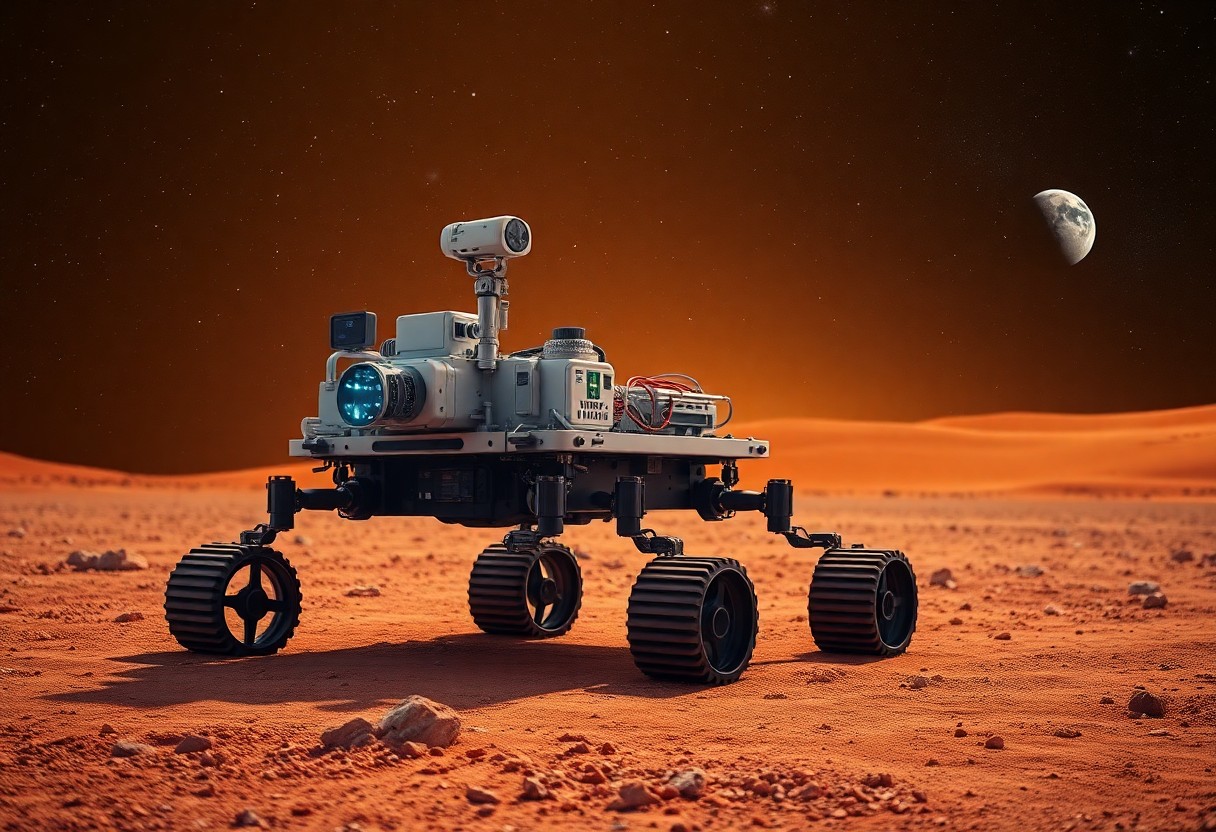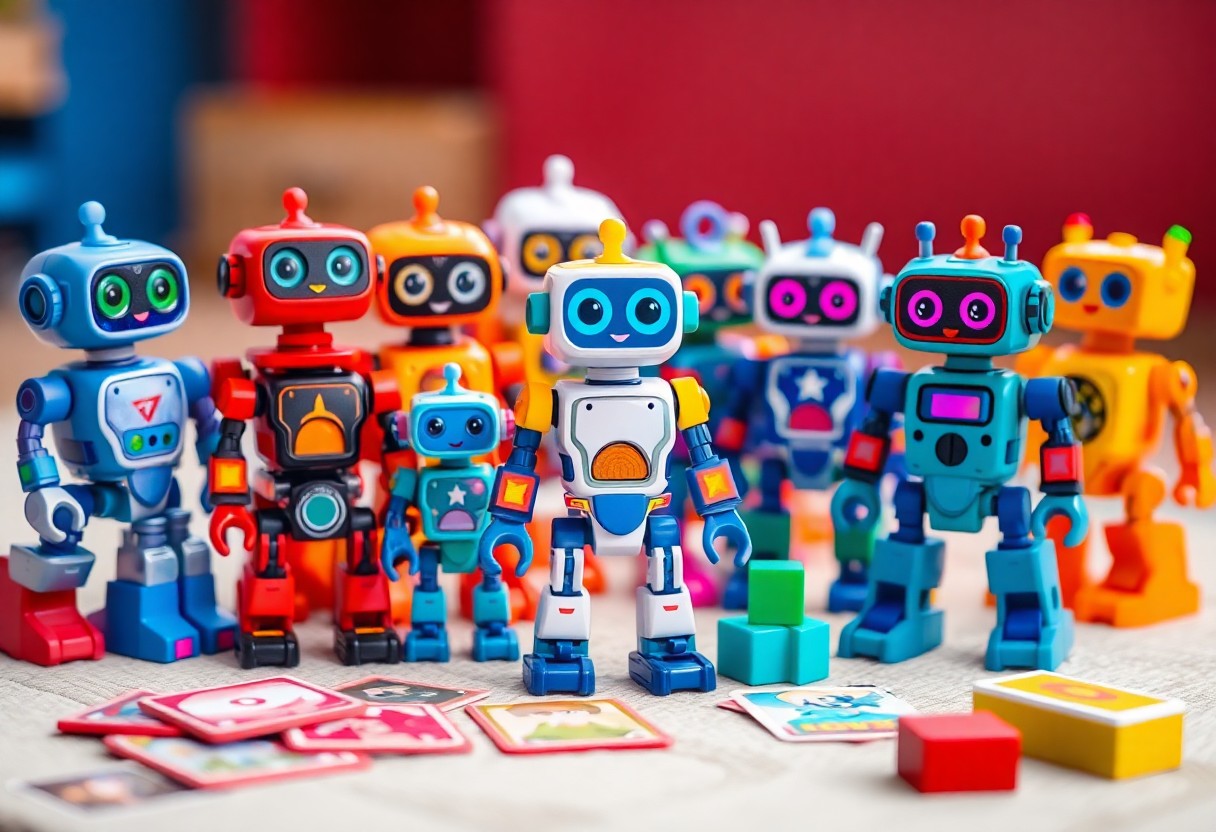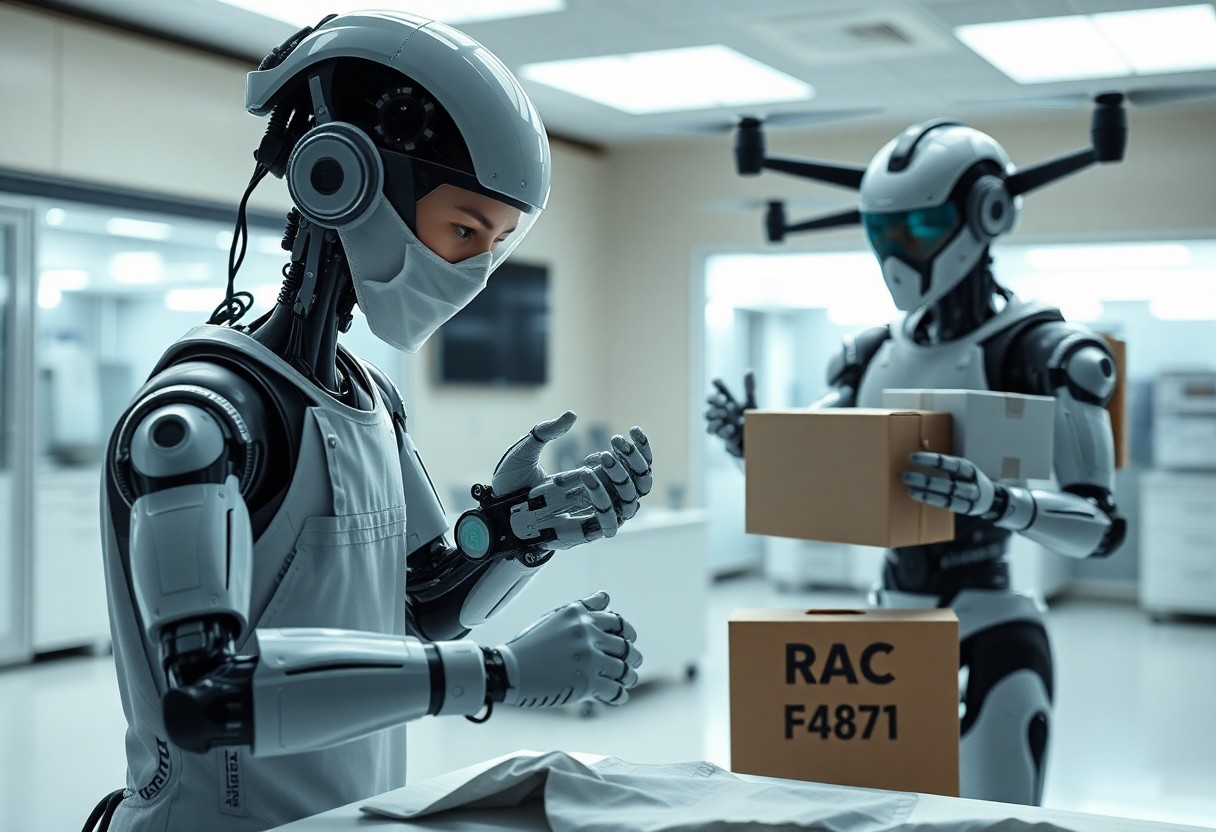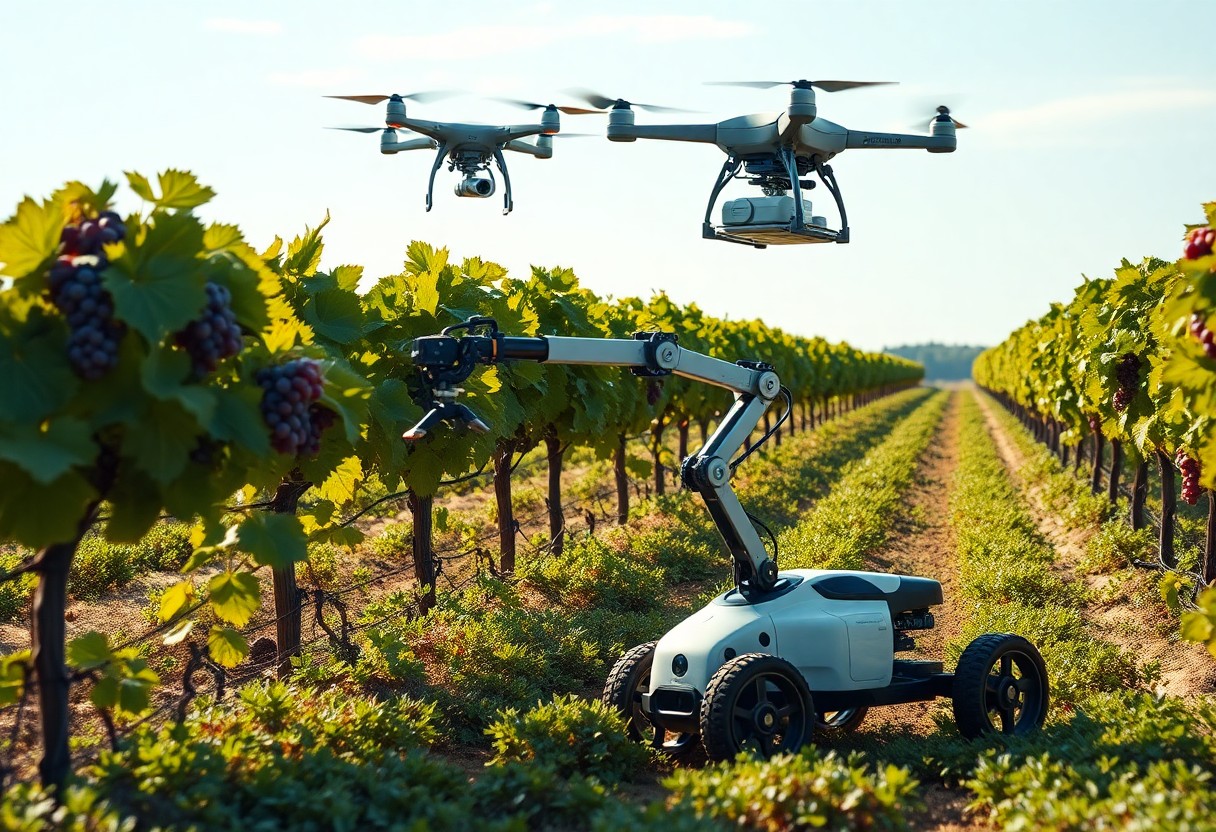Many advancements in space exploration hinge on the groundbreaking capabilities of robots. As you explore into the fascinating world of robotic technology, you’ll discover how these machines are not only enhancing our understanding of distant planets but also minimizing risks to human life. From rovers navigating the Martian surface to orbiters analyzing the atmospheres of gas giants, these robotic assistants are paving the way for future missions. Join us as we explore the vital roles these robots play in your quest for knowledge about the cosmos.
Revolutionizing Space Exploration with Autonomous Robots
Autonomous robots are transforming the landscape of space exploration, enabling missions that were previously deemed impossible. By operating independently, these robots can navigate hostile environments, perform complex tasks, and gather necessary data without direct human intervention. For instance, rovers like NASA’s Perseverance are equipped with advanced algorithms, allowing them to traverse Mars’ rugged terrain, analyze soil samples, and conduct scientific experiments, all while minimizing human risk and mission costs.
The Role of AI in Robotic Decision-Making
Artificial intelligence (AI) is at the heart of modern autonomous robots, enhancing their ability to make real-time decisions in unpredictable environments. You may find it fascinating that AI systems can process vast amounts of data, identify patterns, and adjust strategies based on new findings, enabling robots to operate effectively without waiting for human commands, which is critical during long-distance space missions.
Enhancing Data Collection and Analysis through Robotics
Robots equipped with advanced sensors and analytical tools significantly improve data collection and analysis in space exploration. These systems automatically gather environmental samples, monitor atmospheric conditions, and assess geological formations. The continuous stream of data they provide enhances your understanding of distant worlds, allowing for timely evaluations and informed mission adjustments.
For example, the Mars rovers are outfitted with cutting-edge spectrometers and cameras that capture high-resolution images and analyze rock compositions on-site. This immediate feedback loop allows scientists back on Earth to refine their hypotheses rapidly, leading to discoveries about past water activity and potential life-sustaining environments. The capacity to gather and interpret data on-the-fly not only accelerates research but also opens opportunities for deeper explorations as AI-driven robotics continue to push the boundaries of what is possible in space.
Pioneers of the Cosmos: Notable Space Robots and Their Achievements
Countless robots have traversed the cosmos, each contributing unique insights and achievements that have expanded our understanding of the universe. From Mars rovers that analyze planetary geology to interstellar probes providing first glimpses of distant worlds, these robotic pioneers usher in an era of exploration powered by advanced technology and human ingenuity. Their missions signify not only what we’ve accomplished so far but also the exciting future that lies ahead in deep space exploration.
The Mars Rovers: Curiosity, Perseverance, and Beyond
The Mars rovers, particularly Curiosity and Perseverance, have transformed our knowledge of the Red Planet. Curiosity landed in 2012, providing invaluable data about Mars’ climate and geology, while Perseverance, which arrived in 2021, focuses on astrobiology and the search for ancient microbial life. These robots analyze soil samples, capture breathtaking imagery, and even test new technologies like the Ingenuity helicopter, paving the way for future human exploration.
Voyager Probes: Humanity’s Messengers to the Stars
The Voyager probes, launched in 1977, are humanity’s farthest-reaching emissaries. Voyager 1 and Voyager 2 have traveled beyond our solar system and continue to send data back from the interstellar medium. These missions have provided unprecedented insights into the outer planets, including stunning close-up images of Jupiter’s rings and Uranus’ unique tilt. The probes carry a golden record, a time capsule of sounds and images from Earth, aimed at potentially communicating with extraterrestrial civilizations.
As of today, Voyager 1 is over 14 billion miles from Earth, making it the most distant human-made object in existence. Equipped with instruments designed to study cosmic rays, magnetic fields, and plasma waves, it provides real-time data about the environment of interstellar space. Voyager 2, on the other hand, remains the only spacecraft to have visited all four gas giants—Jupiter, Saturn, Uranus, and Neptune. Together, these missions have vastly improved our understanding of planetary atmospheres, moons, and the complexities of space beyond our solar system, embodying the spirit of exploration and the quest for knowledge that defines our journey into the cosmos.
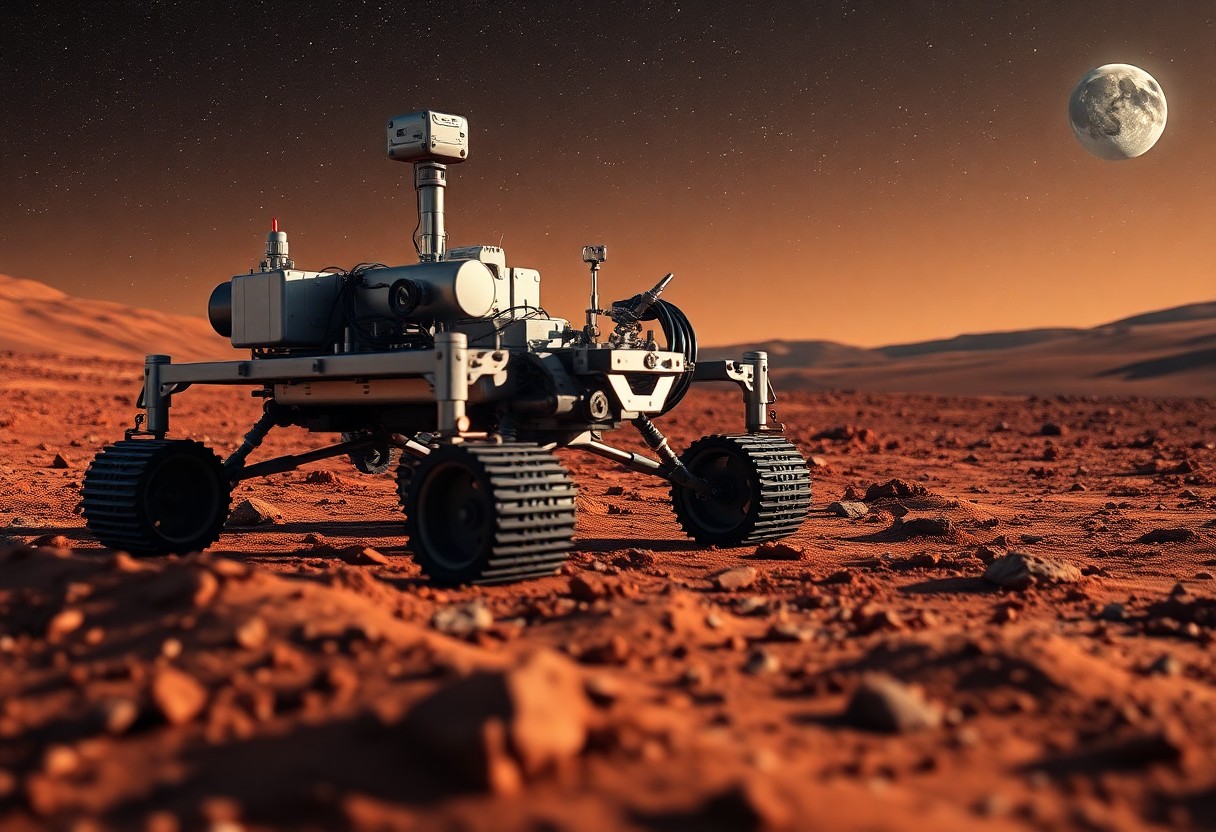
Overcoming the Challenges of Remote Environments
Remote environments present a myriad of challenges that require innovative solutions to ensure mission success. By leveraging advanced robotics, teams can mitigate risks associated with long-distance exploration. Robots equipped with autonomous decision-making capabilities are increasingly crucial, allowing them to adapt to unpredictable circumstances on distant planetary surfaces. These advancements facilitate the provision of real-time data to mission control, enhancing your understanding of the extraterrestrial landscapes you are exploring.
Addressing Communication Delays in Interplanetary Missions
Communication delays between Earth and distant spacecraft can be significant, sometimes resulting in time lags of up to 20 minutes one-way. This disconnect challenges real-time control and decision-making, making it necessary for robots to operate autonomously. By utilizing artificial intelligence and machine learning, your robotic assistants can analyze environmental conditions and execute pre-programmed tasks without waiting for instructions from mission control, ensuring continuous progress in remote settings.
Designing Robots for Extreme Conditions and Durability
The design of robots intended for extreme space environments involves considerations for temperature fluctuations, radiation exposure, and abrasive terrain. The materials used must withstand both the intense cold of outer space and the searing heat encountered on surfaces like Venus. Engineers have developed specialized alloys and composite materials that resist degradation while allowing for flexibility in different atmospheric conditions.
To effectively function in these variable climates, robots incorporate thermal insulation and radiation shielding designed through rigorous testing standards. For example, the Perseverance rover has components made with a titanium alloy and redundancies in its systems to ensure it continues performing despite potential mechanical failures. Harnessing such innovative technologies allows your robotic counterparts to thrive in harsh environments while performing vital operations like sample collection, geological analysis, and habitat assessment on distant worlds.
The Intersection of Robotics and Human Spaceflight
Integrating robotics into human spaceflight offers unprecedented possibilities, meshing the precision of machines with human intuition. As crewed missions evolve, the enhanced synergy between robotic systems and astronauts accelerates the overall success rate in exploration missions. NASA’s Artemis program exemplifies this collaboration, where robotic rovers will pave the way for astronauts on the lunar surface while gathering data in real-time. The fusion of high-tech robotics and human presence signifies a transformative era in tackling the challenges of distant world exploration.
Robotics as a Tool for Astronaut Assistance and Safety
Robots serve as vital companions for astronauts, enhancing safety measures and operational efficiency during missions. For instance, advanced robotic arms are currently assisting astronauts aboard the International Space Station (ISS) by performing delicate tasks — from repairing equipment to conducting scientific experiments. Furthermore, robots like the robotic assistant CIMON have proven invaluable in providing support, enabling astronauts to focus on critical tasks while ensuring safety and enhancing mission productivity.
Preparing for Human and Robotic Collaboration on Mars
Preparing for the partnership between humans and robots on Mars involves comprehensive planning and technological advancements. NASA is currently refining robotic technologies through the Perseverance rover, which has already commenced its critical role in seeking out potential signs of past life and testing in-situ resource utilization strategies. As future missions are developed, establishing protocols and workflows for seamless interaction between astronauts and robotic systems will be vital in executing complex operations and ensuring safety during exploration.
The collaboration between humans and robots on Mars is gaining momentum through extensive simulations and technology trials. These experiments are not just about optimizing robotic capabilities; they also focus on refining human-robot interaction protocols. For instance, astronauts are being trained to operate autonomous rovers remotely, while robots are being equipped with advanced AI to respond dynamically to human commands. Such preparations aim to create a harmonious team rather than separate entities, maximizing efficiency and fostering a safe exploration environment for potential colonization efforts on the Red Planet.
The Future of Space Robotics: Visions and Innovations
As the field of space robotics rapidly evolves, you can expect innovations that redefine exploration boundaries. The fusion of AI and robotics promises to create autonomous systems capable of navigating uncharted territories and executing complex tasks. Advanced communication technologies will enable these robots to operate seamlessly even when hundreds of millions of miles away, bringing distant worlds into closer reach. Future developments may include self-repairing robots and sentient AI that can make real-time decisions based on environmental conditions, further enhancing mission efficiency and safety.
Emerging Technologies Shaping the Next Generation of Space Robots
Innovations such as soft robotics, nanotechnology, and improved power systems are at the forefront of shaping next-generation space robots. Soft robots, designed to manipulate delicate environments, can navigate through varied terrains without damaging their surroundings. Nanotechnology optimizes energy storage and propulsion systems, enhancing the operational capabilities of these robots. Additionally, advancements in battery technology and solar energy collection will ensure that these robotic explorers can sustain longer missions without frequent resupply.
Ethical Considerations in the Age of Autonomous Space Explorers
The deployment of autonomous robots into space raises important ethical questions surrounding decision-making, responsibility, and the potential impact on extraterrestrial environments. As robots become capable of performing tasks without human intervention, consider who is accountable for their actions. Moreover, the interactions between these explorers and native ecosystems, if they exist, necessitate careful consideration of ecological preservation and the unintended consequences of our robotic emissaries.
As you navigate the future landscape of space robotics, ethical concerns emerge regarding the potential consequences of autonomous decision-making in unknown environments. If a robot encounters an extraterrestrial ecosystem, its actions could unknowingly disrupt that environment, raising accountability issues. You should also reflect on how cultural and philosophical perspectives shape views on non-human agents in exploration. With the integration of AI, these robots may encounter scenarios that challenge principles of preserving extraterrestrial life forms and ecosystems. Balancing exploration with ethical stewardship will be vital as you contribute to the conversation about the responsibilities accompanying technological advancements in space.”
Conclusion
With these considerations, you can appreciate how robots in space are transforming our exploration of distant worlds. They not only enhance our understanding of the cosmos but also allow you to envision future missions that are safer and more efficient. As technology continues to advance, you will likely witness even more innovative robotic systems aiding astronauts, collecting valuable data, and potentially paving the way for human habitation beyond Earth. Your engagement with these developments will be necessary in shaping the future of space exploration.

